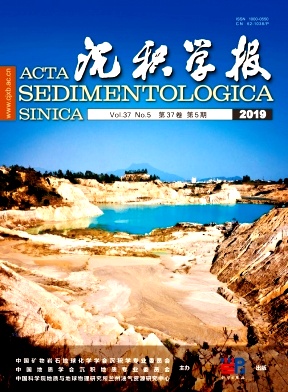The Past,Present and Future of Research on Deep-water Sedimentary Gravity Flow in Lake Basins of China
doi: 10.14027/j.issn.1000-0550.2018.193
- Received Date: 2018-04-11
- Rev Recd Date: 2018-12-12
- Publish Date: 2019-10-10
-
Key words:
- sediment gravity flow /
- deep-water deposits /
- study history /
- research achievements /
- lacustrine basin
Abstract: Deep-water gravity flow deposition is the hotspot of current global oil and gas exploration and research. The study of deep-water gravity flow sedimentation in continental basins in China has been conducted over the past 50 years. It has occurred in three stages:exploration and development of turbidity flow theory (1970-1980s);the industrial application of turbidity flow theory (1990-2000);and sandy debris flow (since 2010). In the past decade,with the development of international deep-water deposition theory and the progress of oil and gas exploration technology in China,research on deep-water sedimentation in lacustrine basins has progressed rapidly and a great deal of new achievements and new understandings have emerged. There are mainly four aspects: (1)There are at least four kinds of gravity flow and traction flow deposition in the deep waters of the center of a lacustrine basin:turbidity flow,hyperpycnal flow,sandy debris flow and bottom flow. (2)Transformations of different types of fluids in the lacustrine occur during the processes of transportation and deposition,forming a hybrid event bed. (3)It has been established that the presence of mud-coated intraclasts indicates sediment transport in lacustrine sandy debris flows. (4)The theories and techniques of seismic sedimentology have been widely used in the analysis of internal sedimentary units of lacustrine gravity flow and to establish sedimentary models in deep-water lacustrine basins,and have achieved great success. Looking to the future,in order to meet the exploration and development needs of the oil and gas industry,the research and development trends of deep-water sediments in lacustrine basins are mainly as follows: (a)the genetic type division of deepwater sandbody,the transportation-deposition process,and the establishment and improvement of it sedimentary model; (b)the genetic mechanism,type division and its significance to oil and gas in deep-water shale (fine sediments); (c)studies of "source-sink" systems and seismic response and evaluation and prediction; (d)experimental simulation of the process of transportation-sedimentation of deep-water sediments;and (e)the establishment of new theories about systems of deep-water deposition and their application in oil and gas exploration and development.
| Citation: | LI XiangBo, LIU HuaQing, PAN ShuXin, WANG Jing. The Past,Present and Future of Research on Deep-water Sedimentary Gravity Flow in Lake Basins of China[J]. Acta Sedimentologica Sinica, 2019, 37(5): 904-921. doi: 10.14027/j.issn.1000-0550.2018.193 |






 DownLoad:
DownLoad: